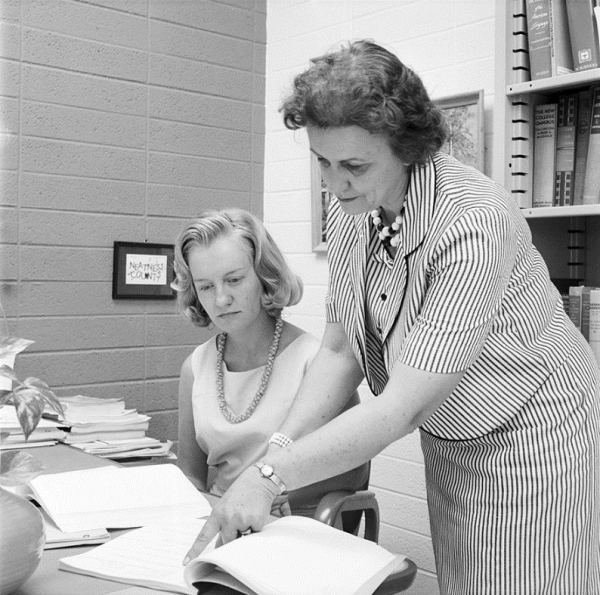From the earliest days of the institution that is now Colorado State University, English was taught, and women taught English.
Although the first person to teach an English course was its first president, Dr. E. E. Edwards, the first to be hired specifically for that task was Elizabeth G. Bell, in 1885. When she resigned for health reasons a year later, Maud Bell took her place. Maud Bell was joined by Grace Espy Patton in 1890. Virginia Corbett then joined the faculty as a literature professor in 1901. Ruth J. Wattles was hired in the 1920s, serving on into the 1950s. In the year that English became a standalone department, Martha Trimble was hired and was a faculty member into the 1970s.
It was some of Trimble’s women colleagues in the 1970s who brought changes to CSU that the earliest English teachers at CSU could only imagine. The Bells, Grace Espy Patton, Virginia Corbett, and R.J. Wattles, after all, came of age before women in the U.S. could vote.

During the 1970s, activist women among the English faculty somehow wrought significant change at CSU while shouldering heavy teaching loads, finishing doctoral dissertations, and, in some cases, raising families.
That women at CSU faced discrimination in the 1970s may surprise few of us. Women English faculty at that time provide numerous examples. Rosemary Whitaker recalled in an interview with the Senior Scholars project that her grading was scrutinized by a suspicious chair “to check to see if I was giving more As to women than men. Well, of course I was. We had more women in the classes than we had men.” She also noted that the head of Faculty Council would refer male faculty as “Dr.” or “Professor,” yet called women faculty with similar credentials “Miss” or “Mrs.” Mary Crow recounts having her annual raise withheld to punish her for amassing parking tickets while a male colleague with a similar problem got his full raise that year.
In 1973, English faculty including Crow, Whitaker, Carol Mitchell, Barbara Lakin, and Fran Lipp were among 60 women faculty who formed a Women’s Caucus. Their purpose was to work on “salary levels, curricula, benefits, Affirmative Action, promotion and tenure, and other University policies that affect women,” according to a Fort Collins Coloradoan article.
To address a vast gender discrepancy in pay, they contacted the U.S. Department of Labor. Although the labor investigator did find clear evidence of gender-based salary inequity, the Caucus could not afford to fund the lawsuit that would be necessary to compel the university to close the salary gap. The Women’s Caucus was able to work within CSU, however, to effect some gradual easing of salary inequity in the form of equity raises over time.
Women in English were also among the founders of the Women’s Studies program. In her Senior Scholars interview, Carol Cantrell describes her role in “inventing” the program as “hugely exciting” and “life-changing.” She speaks enthusiastically of her deep engagement in feminist philosophy and its influence on her scholarship. She describes being motivated to develop Women’s Studies literature courses because “I wanted to share the revolution in perception that I think [feminism] offered.”
Cantrell’s scholarly interest in gender studies was shared by several of her colleagues. Carol Mitchell’s Ph. D. dissertation focused on an anthropological approach to differences in how men and women tell jokes. Mary Crow travelled to Latin America to collect and translate the work of women poets. Lakin, Whitaker, and Pattie Cowell all wrote about women writers. These interests extended to developing courses in the 1970s, as Images of Women in Literature and Modern Women Writers joined the English offerings.
Though by no means comprehensive, this glimpse into the accomplishments of women in English in the 1970s should inspire us to appreciate and build upon their activist legacy.